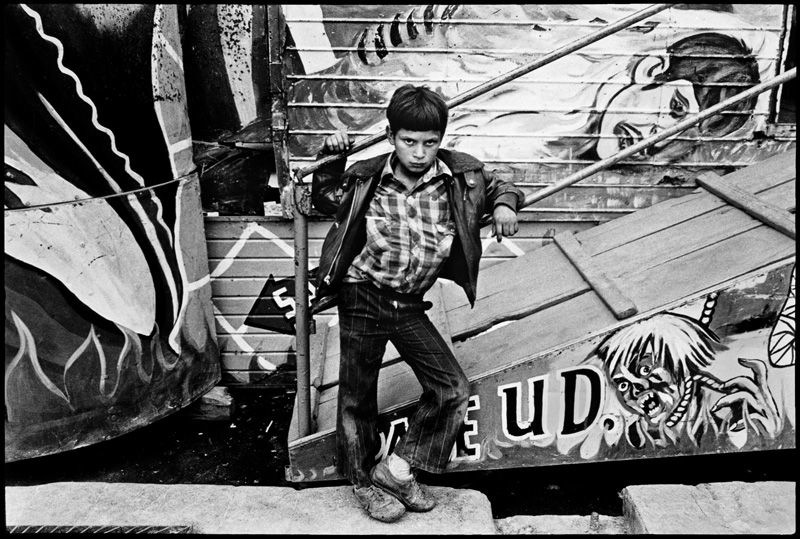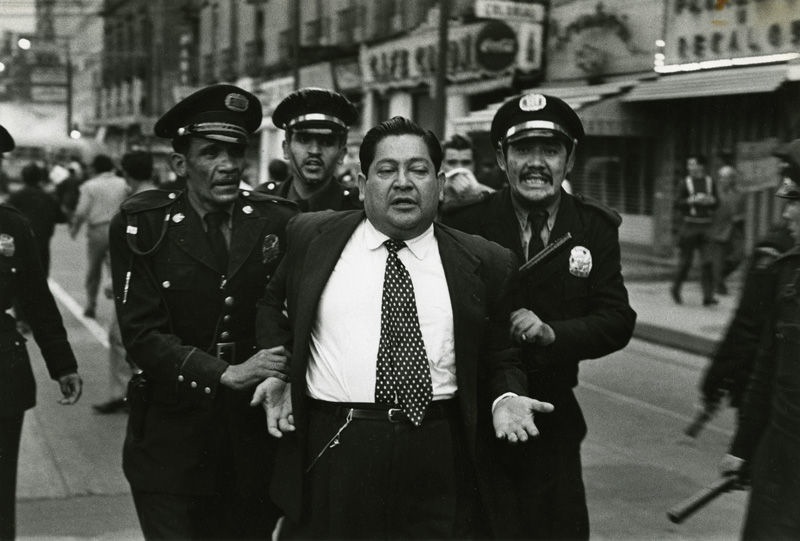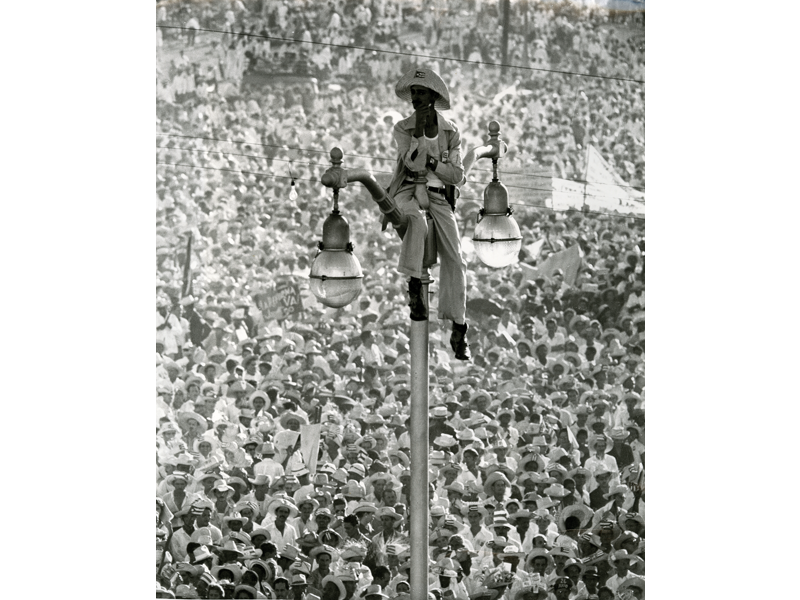NEW YORK. Fino al 7 settembre, l’International Center of Photography (ICP) presenta “Urbes Mutantes: Latin American Photography 1944–2013”, un’importante documentazione dei movimenti fotografici in Argentina, Brasile, Cile, Colombia, Cuba, Messico, Perù, e Venezuela.
Urbes Mutantes fissa la sua attenzione sulle città latino-americane, dinamica e talvolta caotiche e offre una revisione di come sono state immaginate le città del continente. La mostra si basa principalmente sulla fotografia di strada e sulle rappresentazioni dello spazio pubblico durante i periodi di sconvolgimento politico e sociale mostrandone, in varie sezioni, i lati di protesta, di aiuto nella formazione delle identità urbane, di cultura e povertà.

“Le immagini sono diventate tanto importanti quanto le storie che coprono gli eventi che hanno caratterizzato queste nazioni latinoamericane” spiega il curatore ospite Alexis Fabry “e in alcuni casi, politica e arte erano inseparabili”.

Senza tentare di fornire un resoconto esaustivo delle tradizioni fotografiche dell’America Latina, la mostra mette in luce punti di vista alternativi per portare a una riflessione sugli stereotipi generici e mettere in discussione le verità e miti radicati. Rifiutando distinzioni arbitrarie tra i generi della fotografia-fotografia d’arte, fotogiornalismo e fotografia documentaria “Urbes Mutantes” dunque, con più di 200 immagini, mette in evidenza la profondità, la ricchezza e la diversità di una lunga storia fotografica dell’America Latina.
Info: www.icp.org

English version. From May 16 through September 7, 2014, the International Center of Photography (ICP) presents Urbes Mutantes: Latin American Photography 1944–2013, a major survey of photographic movements in Argentina, Brazil, Chile, Colombia, Cuba, Mexico, Peru, and Venezuela.
Urbes Mutantes (Mutant Cities) takes the dynamic and occasionally chaotic Latin American city as its focus. Spanning seven decades, but focused particularly on works produced from the 1950s to the 1980s, the exhibition offers a revision of how the continent’s cities have been imagined. The exhibition draws primarily on street photography and depictions of public space during periods of political and social upheaval. It is organized into sections that explore the street as a platform for protest, the formation of urban identities, popular street culture, and the public face of poverty.
“As the 20th century progressed, amidst struggles for social justice and in defense of democracy and freedom, the city became a setting for uprisings and revolutions,” says Guest Curator Alexis Fabry. “Images became as important as the stories covering the events that shaped these Latin American nations. In certain cases, politics and art were inseparable.”

Without attempting to provide an exhaustive account of Latin America’s photographic traditions, the exhibition spotlights alternative views of the region’s urban centers, bringing greater nuance to stock clichés or rigidly framed generic stereotypes. One of the challenges posed by this exhibition is to reveal how politically and socially committed visions can be paired with other types of urban documentation. These include formal experiments, such as abstract renderings of architecture and urbanization, or the more ironic and cynical works that emerged in the 1990s, which sought to question the region’s immutable truths and entrenched myths.
Rejecting arbitrary distinctions between genres of photography—art photography, photojournalism, documentary—Urbes Mutantes highlights the depth, richness, and diversity of the region’s extensive photographic history. Comprising more than 200 images, the exhibition is drawn from the collection of Leticia and Stanislas Poniatowski, one of the most extensive private archives of Latin American photography. Urbes Mutantes was first shown at the Museo de Arte del Banco de la República in Bogotá in 2013 and was co-curated with María Wills.
Urbes Mutantes: Latin American Photography 1944–2013 is supported by Quilvest, the ICP Exhibitions Committee, Artworkers Retirement Society, and by public funds from the New York

